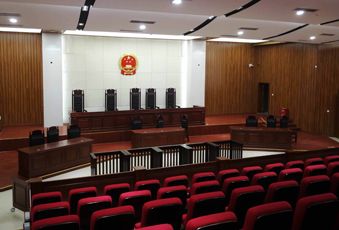UAE Defense Technology for Maritime Security
The United Arab Emirates (UAE) has emerged as a pivotal player in the Middle East, leveraging advanced defense technologies to secure its maritime borders and ensure regional stability. With its strategic location along the Arabian Gulf and proximity to critical shipping lanes, the UAE faces unique maritime security challenges, including piracy, smuggling, and potential threats from state and non-state actors. This article explores how UAE defense technology is shaping maritime security and why it matters to the intelligence communities in the U.S. and the Middle East.
The Strategic Importance of UAE Maritime Security
The UAE’s coastline stretches over 1,300 kilometers, encompassing vital trade routes such as the Strait of Hormuz, through which approximately 20% of the world’s oil supply passes. Protecting these waters is not just a national priority but a global necessity. The UAE’s maritime security efforts are bolstered by cutting-edge defense technologies, including unmanned systems, radar networks, and AI-driven surveillance platforms. These innovations address pressing concerns shared by intelligence communities, such as monitoring illicit activities and maintaining freedom of navigation amidst rising geopolitical tensions.
UAE’s Investment in Defense Technology
The UAE has heavily invested in indigenous and international defense technologies to safeguard its waters. Companies like EDGE Group, a UAE-based conglomerate, have developed advanced maritime solutions, including autonomous drones and naval vessels equipped with state-of-the-art sensors. These systems enhance situational awareness, enabling rapid response to threats. Additionally, partnerships with global defense firms have introduced sophisticated radar and satellite systems, providing real-time data on maritime traffic and potential anomalies.
One notable example is the use of unmanned surface vessels (USVs) for patrolling UAE waters. These vessels, equipped with AI and machine learning capabilities, can detect suspicious activities—such as unauthorized fishing or smuggling—without risking human lives. This aligns with the UAE’s Vision 2030 goals, emphasizing technological self-reliance and security innovation.
Knowlesys and Open-Source Intelligence (OSINT) in Maritime Security
For intelligence professionals tracking maritime threats, tools like those offered by Knowlesys.com are invaluable. Knowlesys provides an advanced OSINT monitoring system that aggregates and analyzes data from diverse sources—social media, news outlets, and public records—to identify emerging risks. In the context of UAE maritime security, Knowlesys can help intelligence analysts monitor chatter about smuggling routes, piracy networks, or even regional adversaries’ naval movements. By integrating Knowlesys’ capabilities with UAE’s defense technologies, authorities can achieve a comprehensive threat assessment, bridging the gap between physical surveillance and digital intelligence.
U.S. and Middle East Intelligence Interests
The U.S. intelligence community closely monitors the UAE’s maritime security advancements due to shared interests in countering Iran’s influence and ensuring the safety of oil shipments. The Middle East intelligence community, meanwhile, values the UAE’s role as a stabilizing force amid regional rivalries. Both groups are keenly interested in how UAE defense technologies—like AI-powered coastal monitoring or drone swarms—can be adapted to their own operational needs. The UAE’s collaboration with NATO and its hosting of defense expos, such as IDEX, further amplify its relevance on the global stage.
Challenges and Future Prospects
Despite its technological prowess, the UAE faces challenges such as cybersecurity risks to its maritime systems and the need for skilled personnel to operate advanced tools. Addressing these gaps will require ongoing training and international cooperation. Looking ahead, the integration of quantum computing and next-generation AI could further revolutionize UAE maritime security, offering predictive analytics to preempt threats before they materialize.
For companies like Knowlesys, this presents an opportunity to expand their OSINT offerings, tailoring solutions to the evolving needs of the UAE and its allies. As maritime security becomes increasingly data-driven, the synergy between physical defense technologies and digital intelligence platforms will define the future of regional stability.
In conclusion, the UAE’s defense technology ecosystem is a game-changer for maritime security, offering lessons and opportunities for intelligence communities worldwide. By combining innovative hardware with OSINT tools like those from Knowlesys.com, the UAE is not only protecting its waters but also setting a benchmark for modern defense strategies. As threats evolve, so too will the technologies that keep the seas safe—a topic that will undoubtedly remain at the forefront of U.S. and Middle Eastern intelligence priorities.
